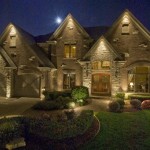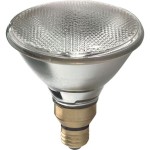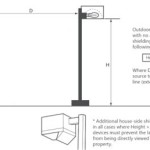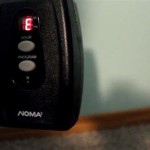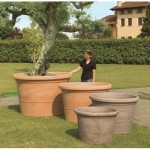Illuminating the Holidays: A Comprehensive Guide to Outdoor Christmas Lights
Outdoor Christmas lights are a ubiquitous symbol of the holiday season, transforming homes and neighborhoods into festive showcases. The selection and installation of these lights require careful consideration to ensure both aesthetic appeal and safety. This article provides a detailed guide to understanding the various types of outdoor Christmas lights, planning an effective display, and implementing safe installation practices.
Understanding the Types of Outdoor Christmas Lights
The market offers a wide array of outdoor Christmas lights, each with unique characteristics and applications. Selecting the appropriate type is crucial for achieving the desired visual effect and ensuring long-term performance.
Incandescent Lights: While less common than LEDs, incandescent lights were traditionally the primary choice for Christmas displays. They produce a warm, glowing light by heating a filament within a glass bulb. However, they are significantly less energy-efficient than LEDs, consuming considerably more electricity and generating more heat. This higher energy consumption translates to increased electricity bills and a higher risk of fire if not properly installed and maintained. Incandescent bulbs also have a shorter lifespan compared to LEDs, requiring more frequent replacements.
LED Lights: Light Emitting Diodes (LEDs) have become the dominant choice for outdoor Christmas lights due to their numerous advantages. They are significantly more energy-efficient than incandescent lights, consuming up to 80% less electricity. This results in substantial cost savings over the lifespan of the lights. LEDs also have a much longer lifespan, often lasting for tens of thousands of hours, reducing the need for frequent bulb replacements. Furthermore, LEDs generate very little heat, making them safer to use, especially in areas with flammable materials. They are also more durable and resistant to breakage compared to incandescent bulbs. The brightness and color saturation of LEDs are generally superior, providing a more vibrant and visually appealing display.
String Lights: String lights are the most versatile and commonly used type of outdoor Christmas light. They consist of a series of small bulbs connected along a wire, available in various lengths and bulb spacings. String lights are suitable for outlining architectural features, wrapping trees and shrubs, and creating general ambient lighting. They can be used both indoors and outdoors, provided they are rated for outdoor use. Common bulb shapes include mini lights (also known as fairy lights), C7 and C9 bulbs (larger, more traditional Christmas bulbs), and globe lights (round bulbs). String lights are available in a wide range of colors, including single colors, multi-colors, and color-changing options.
Net Lights: Net lights are designed for easy coverage of bushes, shrubs, and hedges. They consist of a grid of lights that can be draped over the desired area, providing a uniform and even distribution of light. Net lights are especially useful for quickly decorating large areas with minimal effort. They are available in various sizes and colors to suit different landscaping features. The spacing between the lights in the net can vary, allowing for different levels of illumination.
Icicle Lights: Icicle lights are designed to mimic the appearance of frozen icicles hanging from a roofline or gutter. They consist of strands of lights that hang vertically from a main wire, with varying lengths of strands to create a realistic icicle effect. Icicle lights are typically used to decorate the eaves of a house, creating a festive winter wonderland atmosphere. They are available in various lengths, colors, and light patterns, including static, twinkling, and fading effects.
Rope Lights: Rope lights are encased in a flexible plastic tube, making them highly durable and weather-resistant. They are often used to outline walkways, decks, and other outdoor features. Rope lights are available in various colors and lengths, and they can be easily bent and shaped to conform to different surfaces. They are also suitable for use in damp or wet locations. Some rope lights are dimmable, allowing for adjustable brightness levels.
Projector Lights: Projector lights project images or patterns onto a surface, such as a house facade or a lawn. They are a relatively new type of Christmas light that offers a unique and dynamic lighting effect. Projector lights can display a variety of images, including snowflakes, stars, Santa Claus, and other holiday-themed designs. They are easy to install and require minimal setup. Some projector lights are equipped with motion effects, creating a more interactive and engaging display. They are also available with different color options and adjustable projection angles.
Planning Your Outdoor Christmas Light Display
A well-planned Christmas light display is essential for achieving a visually appealing and harmonious result. Careful consideration should be given to the architectural features of the house, the surrounding landscape, and the overall desired aesthetic.
Assess the Property: Before purchasing any lights, it is crucial to assess the property and identify the areas to be decorated. This includes measuring the length of the roofline, the height and width of trees and shrubs, and the dimensions of any other features that will be illuminated. Taking accurate measurements will ensure that enough lights are purchased to cover the desired areas adequately. Consider the existing landscaping and architectural elements that can be highlighted with lights.
Develop a Theme or Design: Establishing a theme or design will help to create a cohesive and visually appealing display. This could be a traditional theme with classic colors and motifs, or a more modern theme with bold colors and abstract patterns. Consider the overall style of the house and choose lights that complement its architecture. Popular themes include winter wonderland, Santa's workshop, and religious scenes. Sketching out a design plan can help to visualize the final result and identify any potential challenges.
Choose a Color Palette: Selecting a color palette is an important aspect of planning a Christmas light display. Common color palettes include traditional red and green, classic white, and multi-colored displays. Limiting the number of colors used can help to create a more sophisticated and harmonious look. Consider the colors of the house and landscaping when choosing a color palette. Using contrasting colors can create a dramatic effect, while using similar colors can create a more subtle and elegant look.
Consider Energy Efficiency: As previously mentioned, LED lights are significantly more energy-efficient than incandescent lights. When planning a Christmas light display, it is essential to prioritize LED lights to minimize energy consumption and reduce electricity costs. Also, consider using a timer to automatically turn the lights on and off at specific times, further reducing energy waste. Some smart timers can be controlled remotely via a smartphone app, allowing for greater flexibility and convenience.
Plan for Power Source and Extension Cords: Access to power outlets is a critical factor in planning a Christmas light display. Ensure that there are sufficient outdoor electrical outlets available to power all of the lights. If necessary, use outdoor-rated extension cords to reach areas that are farther away from outlets. Avoid overloading electrical circuits, as this can pose a fire hazard. Consider using a surge protector to protect the lights from power surges and voltage fluctuations. It is also advisable to use Ground Fault Circuit Interrupter (GFCI) outlets to prevent electrical shock.
Safe Installation Practices for Outdoor Christmas Lights
Safety is paramount when installing outdoor Christmas lights. Following proper installation practices will help to prevent accidents and ensure the longevity of the lights.
Use Outdoor-Rated Lights and Extension Cords: It is essential to use lights and extension cords that are specifically designed for outdoor use. These products are typically constructed with weather-resistant materials and are designed to withstand the elements. Using indoor-rated products outdoors can pose a significant safety hazard, as they are not protected from moisture and can easily short circuit. Look for products that are labeled as "outdoor-rated" or "weatherproof."
Inspect Lights and Cords for Damage: Before installing any lights or extension cords, carefully inspect them for any signs of damage, such as frayed wires, cracked bulbs, or loose connections. Damaged lights and cords should be discarded immediately, as they can pose a fire hazard. Replace any burnt-out bulbs with bulbs of the same wattage. Regularly inspect the lights and cords throughout the holiday season to ensure that they remain in good condition.
Use Proper Fasteners: When attaching lights to the house, trees, or other surfaces, use appropriate fasteners that are designed for outdoor use. Avoid using staples, nails, or tacks, as these can damage the wires and create a fire hazard. Use plastic light clips or hooks that are specifically designed for attaching Christmas lights. Ensure that the fasteners are securely attached to prevent the lights from falling down. Avoid hanging lights from power lines or other electrical wires.
Avoid Overloading Electrical Circuits: Overloading electrical circuits is a common cause of fires during the holiday season. To prevent overloading, avoid plugging too many strings of lights into a single outlet or extension cord. Check the manufacturer's instructions for the maximum number of strings that can be safely connected together. If necessary, use multiple outlets or circuits to distribute the electrical load. It is also advisable to use a circuit tester to check the amperage of the circuit before plugging in any lights.
Use a Ladder Safely: When installing lights on higher areas of the house, such as the roofline, use a sturdy ladder and follow all safety precautions. Ensure that the ladder is placed on a stable and level surface. Avoid placing the ladder on ice or snow. Have someone hold the ladder for stability. Never reach too far while on the ladder. Wear appropriate footwear with good traction. If you are not comfortable working on a ladder, consider hiring a professional to install the lights.
Turn Off Lights Before Leaving or Going to Bed: As a safety precaution, always turn off the outdoor Christmas lights before leaving the house or going to bed. This will help to prevent any potential fire hazards and save energy. Using a timer can automate this process. Consider using a smart home system to control the lights remotely.

Outdoor Lights Ideas For The Roof

Outdoor Lights White S

Outdoor Decorating Ideas
The 15 Best Outdoor Lights For Your Most Festive Yuletide Yet

44 Outdoor Lights Ideas

Outdoor Lights Safety Tips Design Ideas

House Lights Showhouse Tour The Honeycomb Home
Very Home Set Of 3 Acrylic Tree Outdoor Lights Co

Pick The Right Lights For Your Home Lowe S

17 Outdoor Lights For A Beautiful And Bright Display
Related Posts
